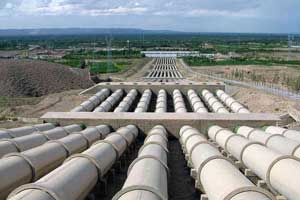Are you familiar with crude oil pipeline drag reducers? If not, prepare to be amazed by the incredible benefits they offer. These ingenious additives are like superheroes for pipelines, reducing friction and increasing flow efficiency. By investing in crude oil pipeline drag reducers, companies can enhance their operations, optimize transportation processes, and ultimately boost their bottom line. In this blog post, we will explore the fascinating world of drag reducers and uncover why they are a game-changer for the oil industry. So buckle up and get ready to dive into this exciting topic!
What are Crude Oil Pipeline Drag Reducers?
Crude oil pipeline drag reducers, also known as drag reducing agents (DRAs), are specialized chemicals that work their magic within pipelines to minimize friction and turbulence during the transportation of crude oil. These additives are designed to improve the flow efficiency of liquids by reducing the resistance encountered when oil moves through the pipeline.
How do they achieve this? Well, it’s all about harnessing the power of polymers. When introduced into the pipeline, these drag reducers form a thin layer on the inner walls, creating a smooth surface for the crude oil to glide over. This effectively reduces turbulent flow and prevents energy loss due to friction.
One remarkable feature of crude oil pipeline drag reducers is their ability to increase throughput without requiring any physical modifications or expansions to existing infrastructure. By optimizing flow conditions and minimizing pressure losses, DRAs allow companies to transport more oil within their current pipelines, maximizing operational capacity and profitability.
But it doesn’t stop there! These incredible additives also offer significant environmental benefits. By improving flow efficiency and reducing pumping requirements, less energy is needed for transportation operations. This translates into lower carbon emissions and a smaller ecological footprint—a win-win situation for both businesses and our planet.
In addition to their role in enhancing transportation processes, crude oil pipeline drag reducers can also play a crucial role during cementing operations in wellbore construction. The same principles that make them effective in pipelines—reducing friction—can be applied here as well. By adding DRAs during cementing operations, operators can improve displacement efficiency and ensure proper zonal isolation while avoiding costly remedial actions down the line.
Investing in crude oil pipeline drag reducers offers numerous advantages: increased throughput capacity without infrastructure expansion, improved energy efficiency resulting in reduced carbon emissions, enhanced cementing operations—the list goes on! With these revolutionary additives at your disposal, you’ll witness smoother operations while reaping financial benefits—an undeniable game-changer for anyone involved in transporting or drilling crude oil.
Why Investing in Crude Oil Pipeline Drag Reducers Is Beneficial
Investing in crude oil pipeline drag reducers can bring numerous benefits to the oil industry. These additives, also known as drag reducing agents (DRAs), are specifically designed to reduce friction and turbulence within pipelines, improving the overall efficiency of transportation.
One major advantage of using drag reducers is their ability to increase throughput. By minimizing the energy lost due to friction, DRAs allow for a higher volume of crude oil to be transported through the pipeline. This means that companies can transport more product in less time, ultimately maximizing their profits.
Additionally, drag reducers help optimize pipeline operations by reducing pressure drop. As a result, pumping stations require less energy to maintain desired flow rates. This not only reduces operating costs but also extends the lifespan of equipment, leading to significant savings over time.
Furthermore, using drag reducers can enhance safety in crude oil transportation. By minimizing turbulence and pressure fluctuations within pipelines, these additives contribute to a more stable flow regime. This helps prevent issues such as surges or vibrations that could potentially damage the infrastructure or compromise personnel safety.
Investing in crude oil pipeline drag reducers offers multiple advantages for both efficiency and safety within the industry.
Conclusion
Investing in crude oil pipeline drag reducers can bring numerous benefits to the oil and gas industry. These powerful additives have proven to be effective in reducing frictional pressure loss, increasing flow rates, enhancing energy efficiency, and improving overall pipeline performance. By minimizing turbulence and optimizing fluid transportation, drag reducers help operators save significant costs by reducing pumping requirements and extending the lifespan of pipelines.
The use of drag reducers also contributes to environmental sustainability by minimizing greenhouse gas emissions associated with pumping operations. This not only helps companies meet regulatory standards but also promotes a more eco-friendly approach to transporting crude oil.
Furthermore, the versatility of crude oil pipeline drag reducers makes them suitable for various applications beyond just crude oil transportation. They can be utilized for other hydrocarbon liquids such as natural gas liquids (NGLs) or refined petroleum products like gasoline and diesel fuel.
By investing in high-quality drag reducing agents from reputable suppliers, companies can ensure optimal performance and reliability throughout their operations. It is essential to work closely with experts who understand the specific needs of each pipeline system and can provide tailored solutions that maximize efficiency.
Incorporating crude oil pipeline drag reducers into operational strategies offers substantial advantages including improved flow rates, reduced energy consumption, extended equipment life span, enhanced environmental sustainability, and increased profitability.

